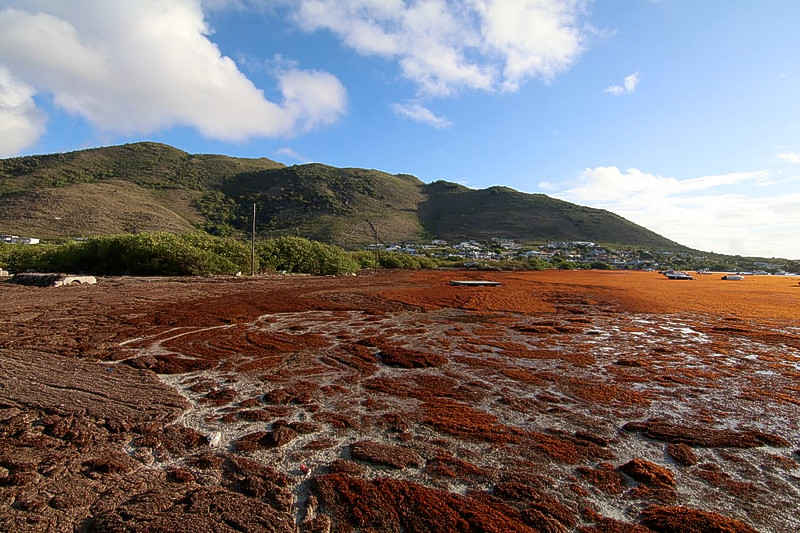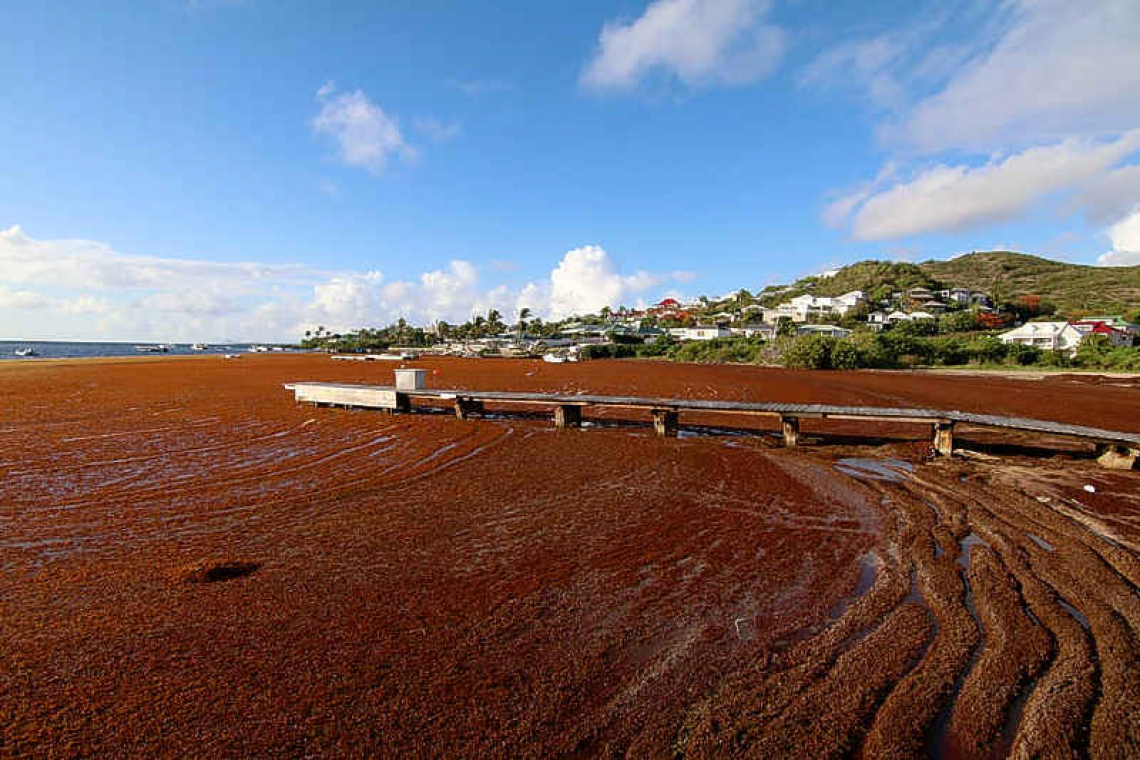A massive amount of Sargassum weed seen in Cul-de-Sac Bay on Monday. Photo by Gregory Rohard.
MARIGOT--Faced with an increase in huge swathes of Sargassum weed carpeting the coastlines at various locations in St. Martin, Préfet Délégué Serge Gouteyron will convene an urgent meeting early next week to develop an action plan.
An increase in Sargassum seaweed arriving on the coasts of St. Barths and St. Martin has been observed since 2011. These have intensified since 2015, particularly between the months of March and August with a peak in June and July.
The Préfecture notes the situation has deteriorated significantly since April 2021. At that time the Préfet sent a letter dated April 14 to the Collectivité to “mobilise beach-cleaning teams” at the sites most impacted. State services are always ready to support the action of territorial services.
The harmful consequences of this phenomenon are now known to all and are currently felt by a large part of the population living on the impacted coastline, especially Grandes Cayes, Cul-de-Sac, Baie Orientale, Le Galion, Quartier d’Orléans and Baie Lucas.
The decomposition of algae generates hydrogen sulphide gas, which can cause headaches, nausea, vomiting and respiratory problems. The discomfort felt by the population also severely penalises the tourism economy of the island, in particular for St. Martin, when the collection did not take place as agreed upon, despite multiple measures put in place by the State to support the Collectivités.
A local emergency plan has been developed in St. Barths and St. Martin since 2018 for the support of the relevant Collectivités by the State services. The services of the Directorate of Environment, Development and Housing inform the territorial services twice a week of the risks of Sargassum deposits.
At the same time, a guide to good collection practices has been published by the Direction de l’Environment et de l’Aménagement et du Logement (DEAL) and is available to the public. Finally, Regional Health Agency ARS carries out surveys to measure the presence of hydrogen sulphide at sites affected by the weed.
Sargassum keeps arriving daily, and it continues to decompose. The strong presence of hydrogen sulphide presents a health risk.
In St. Barths, the collection of Sargassum has been carried out by a private service provider since the beginning of the phenomenon. The fresh Sargassum is collected daily and stored on sites far from homes. A project to create paper pulp from this Sargassum is underway while another process has been approved with a first pilot processing site to be installed in Guadeloupe.

Boats float on a bed of Sargassum weed. Photo by Gregory Rohard.







